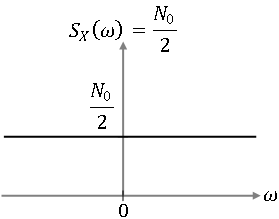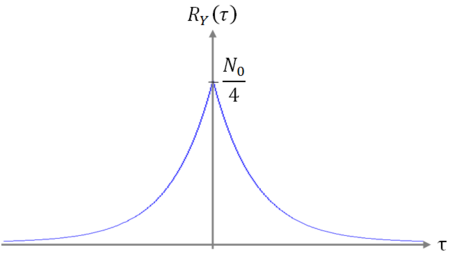(New page: Category:ECE600 Category:Lecture notes Back to all ECE 600 notes <center><font size= 4> '''Random Variables and Signals''' </font size> <font size=...) |
m (Protected "ECE600 F13 Linear Systems with Random Inputs mhossain" [edit=sysop:move=sysop]) |
||
| (6 intermediate revisions by 2 users not shown) | |||
| Line 3: | Line 3: | ||
[[ECE600_F13_notes_mhossain|Back to all ECE 600 notes]] | [[ECE600_F13_notes_mhossain|Back to all ECE 600 notes]] | ||
| + | |||
| + | ---- | ||
| + | [[Category:ECE600]] | ||
| + | [[Category:probability]] | ||
| + | [[Category:lecture notes]] | ||
| + | [[Category:slecture]] | ||
<center><font size= 4> | <center><font size= 4> | ||
| − | '''Random Variables and Signals''' | + | [[ECE600_F13_notes_mhossain|'''The Comer Lectures on Random Variables and Signals''']] |
</font size> | </font size> | ||
| + | |||
| + | [https://www.projectrhea.org/learning/slectures.php Slectures] by [[user:Mhossain | Maliha Hossain]] | ||
| + | |||
<font size= 3> Topic 20: Linear Systems with Random Inputs</font size> | <font size= 3> Topic 20: Linear Systems with Random Inputs</font size> | ||
| + | |||
</center> | </center> | ||
| − | + | ---- | |
---- | ---- | ||
| Line 37: | Line 47: | ||
<center><math>Y(t) = X(t)\ast h(t)</math></center> | <center><math>Y(t) = X(t)\ast h(t)</math></center> | ||
| − | We want to know E[Y(t)] and R<math>_{ | + | We want to know E[Y(t)] and R<math>_{YY}</math>(t<math>_1</math>,t<math>_2</math>). |
First the mean: <br/> | First the mean: <br/> | ||
| Line 100: | Line 110: | ||
* R<math>_X(\tau)</math> real ⇒ S<math>_X(\omega)</math> is an even function of <math>\omega</math> | * R<math>_X(\tau)</math> real ⇒ S<math>_X(\omega)</math> is an even function of <math>\omega</math> | ||
| − | '''Definition''' <math>\qquad</math> The '''cross | + | '''Definition''' <math>\qquad</math> The '''cross correaltion function''' of random processes X(t) and Y(t) is <br/> |
<center><math>\tilde{R}_{XY}(t_1,t_2)=E[X(t_1)Y(t_2)]</math></center> | <center><math>\tilde{R}_{XY}(t_1,t_2)=E[X(t_1)Y(t_2)]</math></center> | ||
'''Definition''' <math>\qquad</math> The random processes X(t) and Y(t) are '''jointly WSS''' if each is WSS and <br/> | '''Definition''' <math>\qquad</math> The random processes X(t) and Y(t) are '''jointly WSS''' if each is WSS and <br/> | ||
<center><math>\tilde{R}_{XY}(t_1,t_2)=R_{XY}(\tau)</math></center> | <center><math>\tilde{R}_{XY}(t_1,t_2)=R_{XY}(\tau)</math></center> | ||
| − | for some R<math>_{ | + | for some R<math>_{XY}</math>: '''R''' → '''R''', where <math>\tau</math> = t<math>_1</math> - t<math>_2</math>. |
'''Definition''' <math>\qquad</math> The '''cross power spectral density''' of two jointly WSS random process X(t) and Y(t) is <br/> | '''Definition''' <math>\qquad</math> The '''cross power spectral density''' of two jointly WSS random process X(t) and Y(t) is <br/> | ||
| Line 138: | Line 148: | ||
'''Example''' <math>\qquad</math> If X(t) is white noise, zero mean, then <br/> | '''Example''' <math>\qquad</math> If X(t) is white noise, zero mean, then <br/> | ||
<center><math>R_X(\tau) = \frac{N_0}{2}\delta(\tau)</math><br/> | <center><math>R_X(\tau) = \frac{N_0}{2}\delta(\tau)</math><br/> | ||
| − | <math>\Rightarrow S_X(\omega) = \frac{N_0} | + | <math>\Rightarrow S_X(\omega) = \frac{N_0}{2}</math></center> |
<center>[[Image:fig3_linear_systems_with_random_inputs.png|450px|thumb|left|Fig 3: Power spectral density S<math>_X(\omega)</math>, of a zero mean, white noise random process X(t).]]</center> | <center>[[Image:fig3_linear_systems_with_random_inputs.png|450px|thumb|left|Fig 3: Power spectral density S<math>_X(\omega)</math>, of a zero mean, white noise random process X(t).]]</center> | ||
| Line 162: | Line 172: | ||
This result could have also been derived using <br/> | This result could have also been derived using <br/> | ||
| − | <center>R_Y(\tau)= | + | <center><math>R_Y(\tau)=(\tilde{h}\ast h\ast R_X)(\tau)</math></center> |
| − | <center>[[Image:fig4_linear_systems_with_random_inputs.png|450px|thumb|left|Fig 4: R<math> | + | <center>[[Image:fig4_linear_systems_with_random_inputs.png|450px|thumb|left|Fig 4: R<math>_Y(\tau)</math>.]]</center> |
Latest revision as of 12:13, 21 May 2014
The Comer Lectures on Random Variables and Signals
Topic 20: Linear Systems with Random Inputs
Contents
Linear Systems with Random Inputs
We will now study what happens when a random signal is the input to a linear system, or more specifically, a linear time-invariant (LTI) system. We will characterize the output is the system by finding the mean and autocorrelation functions of the output in terms of those of the input signal.
Recall that an LTI system can be characterized by its impulse response h(t).
With an arbitrary input x(t), the output of the system is x(t) * h(t).
What if the imput is a random process X(t)? Then we have the scenario depicted in figure 2.
Then, ∀$ \omega $ ∈ S,
Dropping $ \omega $ from the notation,
We want to know E[Y(t)] and R$ _{YY} $(t$ _1 $,t$ _2 $).
First the mean:
So
Now R$ _{YY} $(t):
So
Very often, we will assume that X(t) is WSS. What happens to $ \mu_Y $ and R$ _{YY} $ then?
First the mean:
So $ \mu_Y $(t) does not depend on t and
Now R$ _{YY} $: from earlier,
for some function R$ _Y $: R → R, where $ \tau $ = t$ _2 $ - t$ _1 $.
Constant $ \mu_Y $ and R$ _{YY} $(t$ _1 $,t$ _2 $) = R$ _Y(\tau) $ implies:
Important result: If the input of a stable LTI system is WSS, then the out put is WSS. By stable LTI system characterized by impulse response h(t) we mean that
The Power Spectrum
What is the "frequency content" of a random process X(t)?
Definition $ \qquad $ The power spectral density or PSD of a WSS random process X(t) is the Fourier transform of its autocorrelation function:
Poperties:
- Since R$ _X(-\tau) $ = R$ _X(\tau) $, S$ _X(\omega) $ is real.
-
- R$ _X(\tau) $ real ⇒ S$ _X(\omega) $ is an even function of $ \omega $
Definition $ \qquad $ The cross correaltion function of random processes X(t) and Y(t) is
Definition $ \qquad $ The random processes X(t) and Y(t) are jointly WSS if each is WSS and
for some R$ _{XY} $: R → R, where $ \tau $ = t$ _1 $ - t$ _2 $.
Definition $ \qquad $ The cross power spectral density of two jointly WSS random process X(t) and Y(t) is
Question: If X(t) is the WSS input to an LTI system with impulse response h(t), then what is the PSD of the output Y(t)?
First, write R$ _Y(\tau) $ as a convolution. From before, we have that
Let $ \lambda = -\alpha $. Then,
where
Let
Then
Also, it can be shown that
So
Example $ \qquad $ If X(t) is white noise, zero mean, then
$ \Rightarrow S_X(\omega) = \frac{N_0}{2} $
Example $ \qquad $ Given
X(t) is white noise with $ \mu_X $ = 0 and
Then,
and
To show this,
$ H(\omega)=\frac{1}{1+i\omega} $
So
This result could have also been derived using
References
- M. Comer. ECE 600. Class Lecture. Random Variables and Signals. Faculty of Electrical Engineering, Purdue University. Fall 2013.
Questions and comments
If you have any questions, comments, etc. please post them on this page





